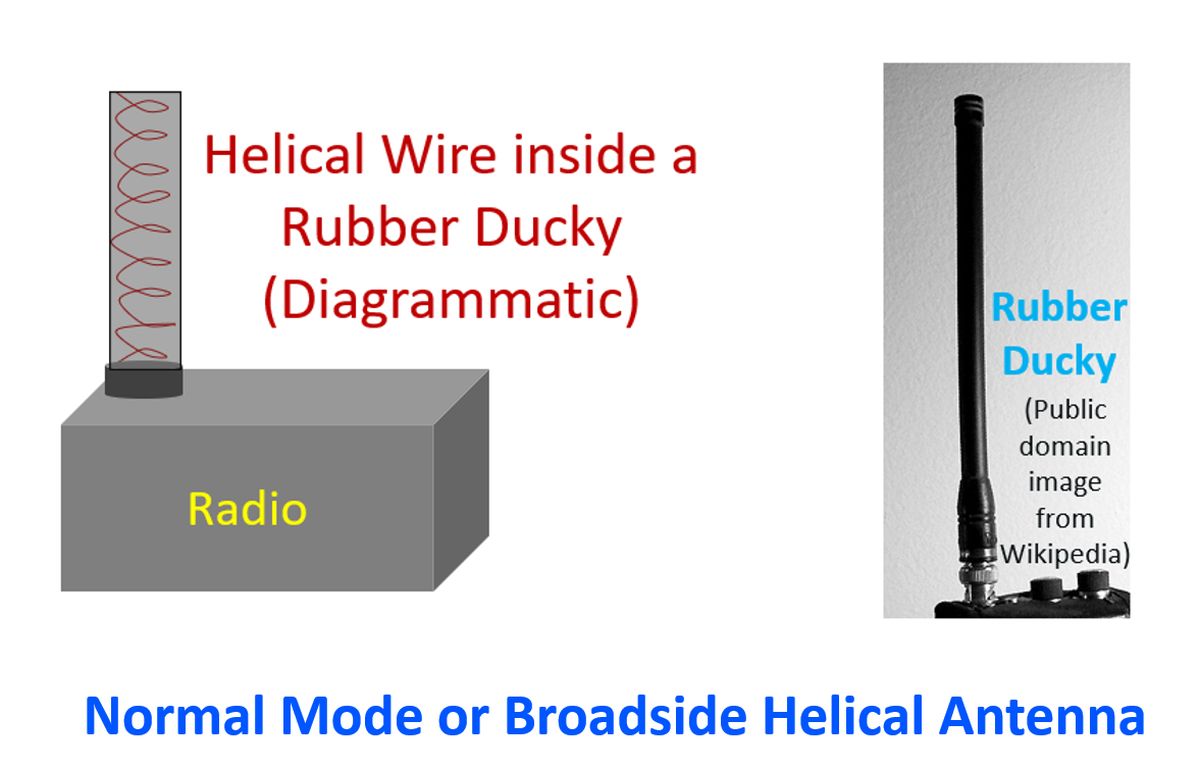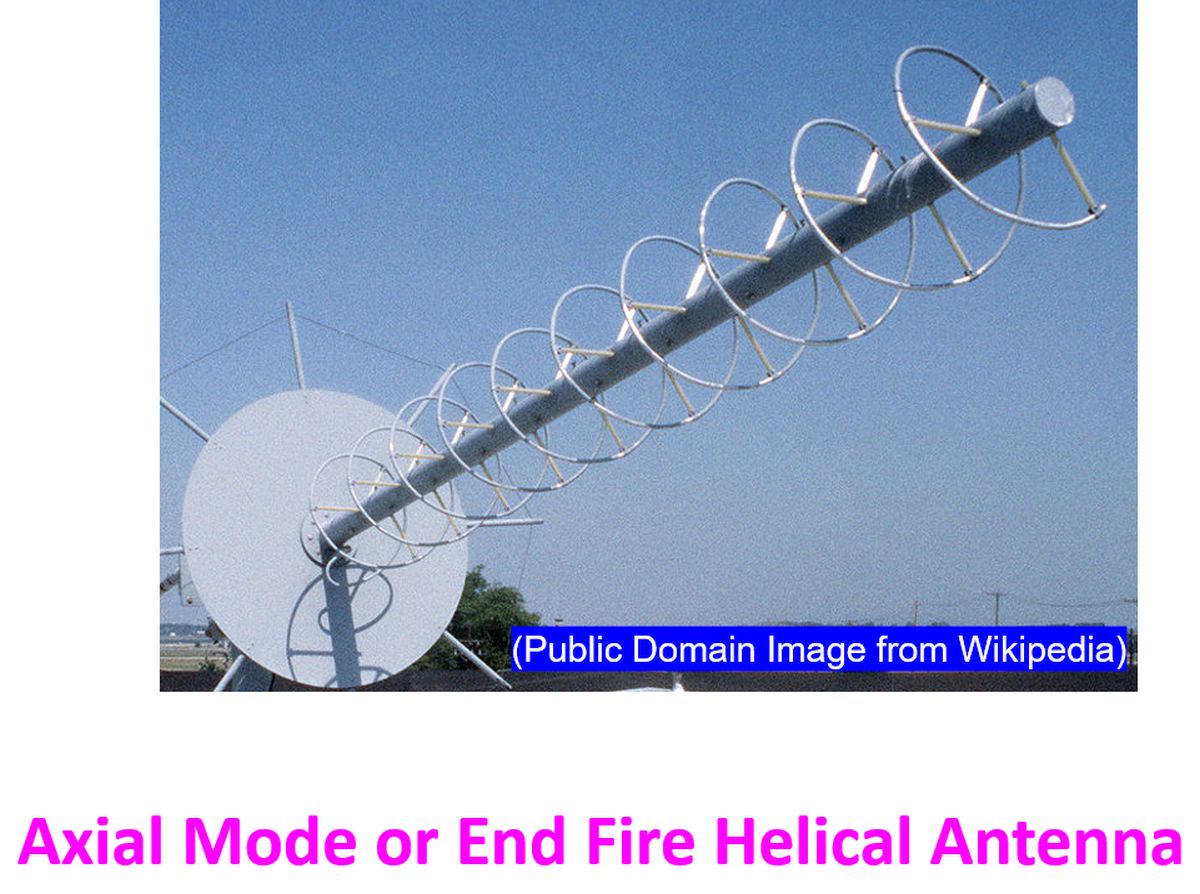What is a Helical Antenna?
What is a Helical Antenna?
Helical antenna, as the name implies, is an antenna in which one or more conducting wires are wound in the form of a helix. It is typically used in VHF and UHF ranges, with the most common example in Amateur Radio as the Rubber Ducky of hand held radios. Helix can be found inside the Rubber Ducky when the outer covering is removed. If the helical antenna is made of a single wire, it is called monofilar and bifilar if it has two wires and quadrifilar if it has four wires. Helical antennas can operate in normal mode as broadside helical antenna or in axial mode as end fire helical antenna.
In the normal mode, diameter and pitch or the distance between successive turns of the helix, are small compared to the wavelength. They function like electrically short dipole or monopole equivalent to a quarter wave length vertical antenna. The inductuance of the helix acts like the loading coil for electrically shortened dipole antenna. Normal mode helical antennas have maximum radiation at right angles to the axis of the helix and they are ominidrectional.

Rubber Ducky is the typical example of a normal mode or broadside helical antenna. Being electrically shortened antennas, gain and range of communication of Rubber Ducky is less than that of a full sized antenna, as every Ham Radio operator is fully aware. Monofilar helical antennas have linearly polarized radiation pattern parallel to the axis of the helix. Bifilar or quadrifilar helical antennas can have broadside circularly polarized radiation pattern.

Diameter and pitch of the helix are comparable to the wavelength in axial mode or end fire helical antennas. These are directional antennas radiating off the ends of the helix along the long axis of the antenna. Radiation pattern is circularly polarized and end fire helical antennas are used for satellite communication, as the antenna illustrated here. As you can see, there is a ground plane reflector at the base of the antenna.